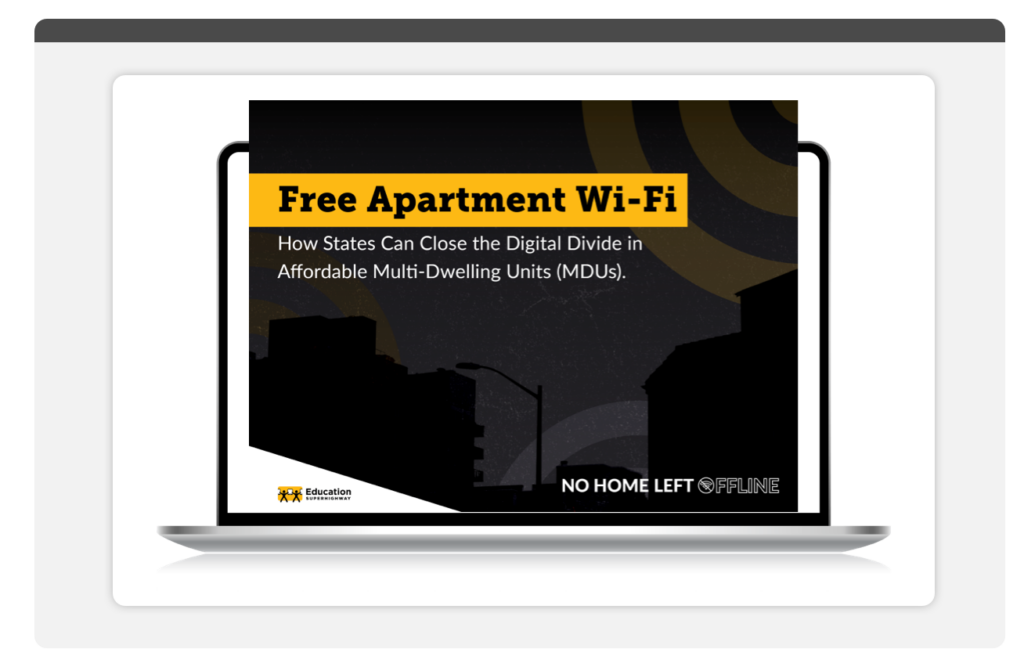We analyzed all NTIA-approved challenge process plans and rounded up three key recommendations for states still finalizing their Broadband Equity, Access, and Deployment (BEAD) Initial Proposals to help yield more accurate broadband maps.
1. Include the newly NTIA-approved Cellular Licensed Fixed Wireless (CLFW) pre-challenge modification.
WHAT IS THE NEW MODIFICATION?
The new modification designates as underserved any Broadband Serviceable Location (BSL) only served by Cellular Licensed Fixed Wireless (CLFW) service.
Cellular providers can rebut by showing their network can meet advertised speeds for all served locations.
WHY INCLUDE THE NEW MODIFICATION?
Cellular Licensed Fixed Wireless connections do not typically deliver the speed required to serve a Broadband Serviceable Location (BSL). According to speedtest.net, as of February 2024, median CLFW internet speeds in the United States are approximately 120 Mbps download and 10 Mbps upload, which do not meet the NTIA’s 100/20 definition of “served.”
Another reason CLFW connections generally do not typically deliver 100/20 is that cellular networks, by design, have a significant drop-off in data rates the farther a user is from the source (e.g., tower). Marketed data rates are often not reached at even only 1-2 miles from the cellular source, and can be further reduced if the signal must pass through obstructions like trees or walls. These customers can experience significantly slower and inconsistent internet speeds due to extreme data throttling (i.e., reducing bandwidth allocation) from monthly data caps or during periods of high demand, including the inability to access speeds of 25/3 or 100/20 to meet the served or underserved BEAD Program requirements respectively.
Finally, EducationSuperHighway has also found that CLFW providers are the least accurate in terms of their service availability reporting, by a large margin. For a CLFW provider in one state, for example, EducationSuperHighway was unsuccessful in ordering any level of service from 59% of 114 assessed locations where they claimed to offer service.Including this modification will result in maps that accurately reflect the reality of user experience in that location.
APPROVED PROPOSAL LANGUAGE
Check out the CLFW modification language from Georgia Technology Authority’s approved Initial Proposal Volume:
will treat as “underserved” locations that the National Broadband Map shows to have available qualifying broadband service (i.e., a location that is “served”) due solely to the availability of Cellular Fixed Wireless Access (CFWA).The affected CFWA provider will have an opportunity to rebut this modification. To successfully rebut this modification, the cellular fixed wireless provider must demonstrate that it:is providing 100/20 Mbps or better service at the relevant locations (e.g., by using the rebuttal approach for the speed test area challenge); andhas sufficient network capacity to simultaneously serve (i.e., as concurrently active subscribers) at least 80% of locations in the claimed coverage area reported as served only by cellular fixed wireless. As one option for making such a showing, a provider may describe how many fixed locations it serves from each cell tower and the amount of per-user averaged bandwidth it uses for capacity planning. A capacity of 5 Mbps for each claimed location is considered sufficient.
Georgia BEAD IP Volume 1
2. Update the Multi-Dwelling Unit (MDU) Challenge Module with NTIA-approved criteria to reduce the number of units needed to trigger a challenge.
WHAT DOES THE NEW MDU CHALLENGE MODULE SAY?
“An MDU challenge requires challenges for one unit for MDUs having fewer than 15 units, for two units for MDUs of between 16 and 24 units, and at least three units for larger MDUs“
NTIA BEAD Challenge Process Guidance
WHY INCLUDE THE NEW MDU MODULE CHALLENGE LANGUAGE?
The new language significantly lessens the burden on the challenger.
Per the original language, 10% of units must be challenged in order to require providers to submit rebuttal evidence to demonstrateg they serve all the units in an MDU. For example, a 100-unit building would require ten units worth of evidence versus the three units required under the new language.
The lower the workload required of resource limited non-profit or local government challengers, the more challenges likely to be submitted, resulting in more accurate maps.
3. Allow challenges that classify a served Residential Public/Affordable Housing MDU BSL that houses a community room providing digital resources as a CAI.
WHY CAN THEY BE CLASSIFIED AS A CAI?
By providing digital resources (e.g., computers, internet, digital literacy classes) in common areas, multi-dwelling affordable and public housing meets the statutory definition of a Community Anchor Institution (CAI) by “facilitat[ing] greater use of broadband service by vulnerable populations.”
NTIA has approved Vermont’s Initial Proposal Volume 1 and in the Final Version cured on March 8, 2024 posted to the Vermont Community Broadband Board (VCBB) website, they have designated HUD-assisted housing developments as a CAI.
WHY SHOULD THEY BE CLASSIFIED AS A CAI? Massachusetts Broadband Institute explains it well in their Initial Proposal Volume 1:
Affordable housing is an integral resource for low-income individuals, aging individuals, and disabled individuals. Residents in affordable housing are often families and may be part of multiple vulnerable populations. Implementing reliable, high-speed internet within affordable housing removes barriers, such as transportation, cost of service, and limited hours of operation, and empowers residents to have access to resources in the comfort of their own home. Having high-speed internet within their living arrangement allows individuals to apply for social services or jobs, access telehealth services, and complete education requirements and assignments in their own timeframe. Providing long-term, reliable, high-speed internet could improve the health and economic well-being and outcomes of vulnerable households in Massachusetts.






